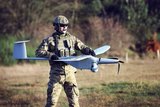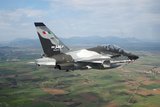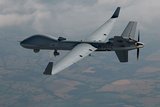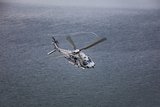Japanese satellites to track hypersonic weapons
Japan could cooperate with the US on the latter’s Hypersonic and Ballistic Tracking Space Sensor. (Northrop Grumman)
Japan’s MoD budgeted JPY170 million ($1.5 million) for early-stage research into satellite constellations in its FY2021 budget. The future constellation will track hypersonic weapons that are hard for current ballistic missile defence systems to detect.
Multiple Japanese microsatellites in low orbit will monitor targets one after the other to achieve continuous monitoring. Even if one satellite loses functionality, other satellites will be able to step in.
In recent years, the vulnerability of expensive satellites has become an issue. They increase space debris, and some nations are developing attack methods to neutralise them, such as killer satellites, anti-satellite missiles and laser
Already have an account? Log in
Want to keep reading this article?
More from Air Warfare
-
![Portugal signals interest in establishing A-29N final assembly line]()
Portugal signals interest in establishing A-29N final assembly line
As the launch customer for the NATO-configured variant, Portugal also took delivery of the first five A-29N aircraft from its order for 12, placed in 2024.
-
![Leonardo signs contract on Austria’s M-346 aircraft order]()
Leonardo signs contract on Austria’s M-346 aircraft order
The first of the 12 M-346 aircraft are expected to be delivered to the Austrian Air Force by 2028, according to the company.
-
![2025 UAV market review: $7.8 billion in new contracts signed as US leads spending]()
2025 UAV market review: $7.8 billion in new contracts signed as US leads spending
Qatar and Indonesia followed the US’s high spending on new uncrewed aerial vehicle contracts across 2025, while MALE and micro drones and loitering munitions were particularly popular subcategories this year.
-
![German Navy in “ramp-up” phase as it welcomes first NH90 Sea Tiger delivery]()
German Navy in “ramp-up” phase as it welcomes first NH90 Sea Tiger delivery
With all 31 aircraft set to be delivered by 2030, the helicopters will gradually replace the ageing Sea Lynx fleet which are due to be retired in 2026.






















